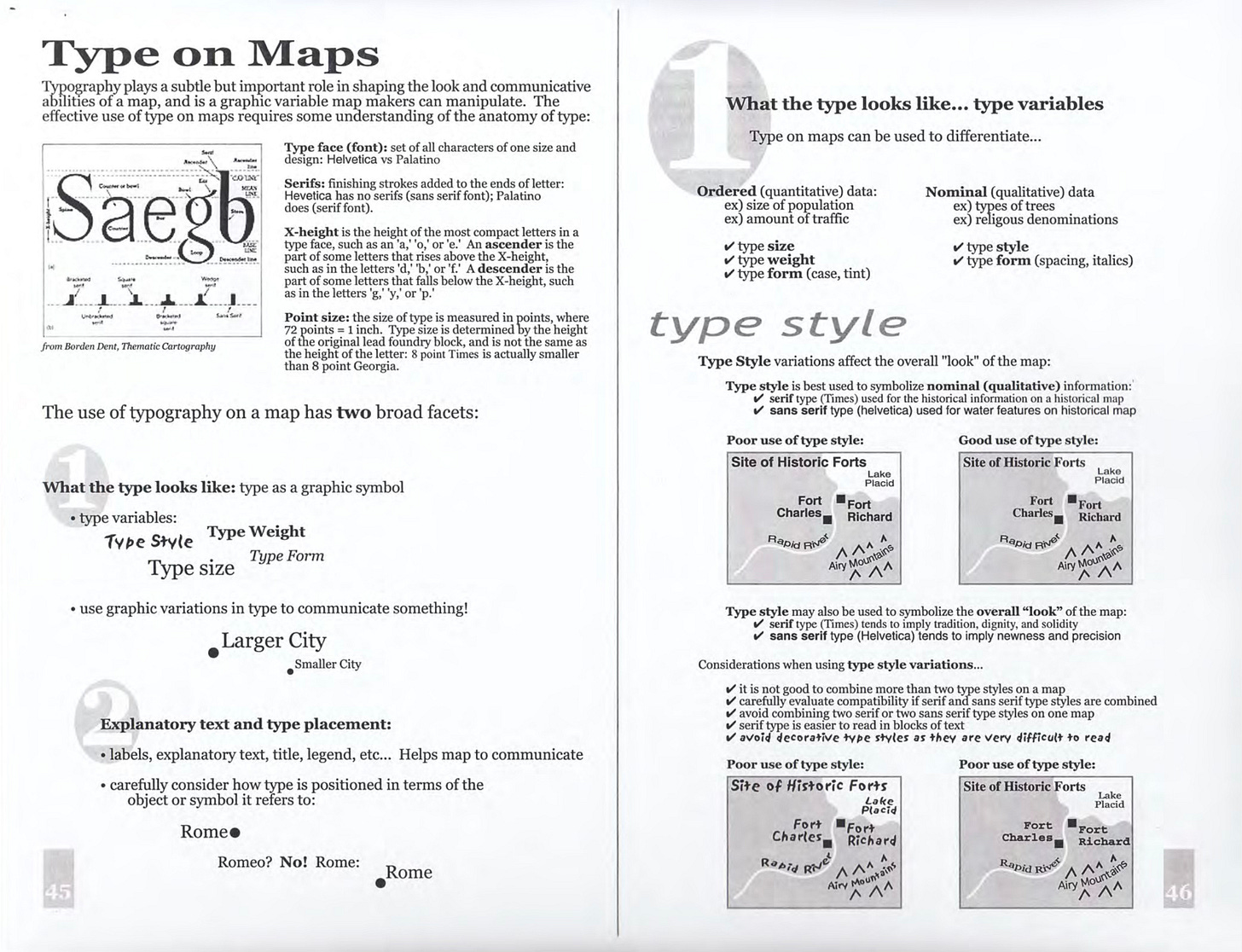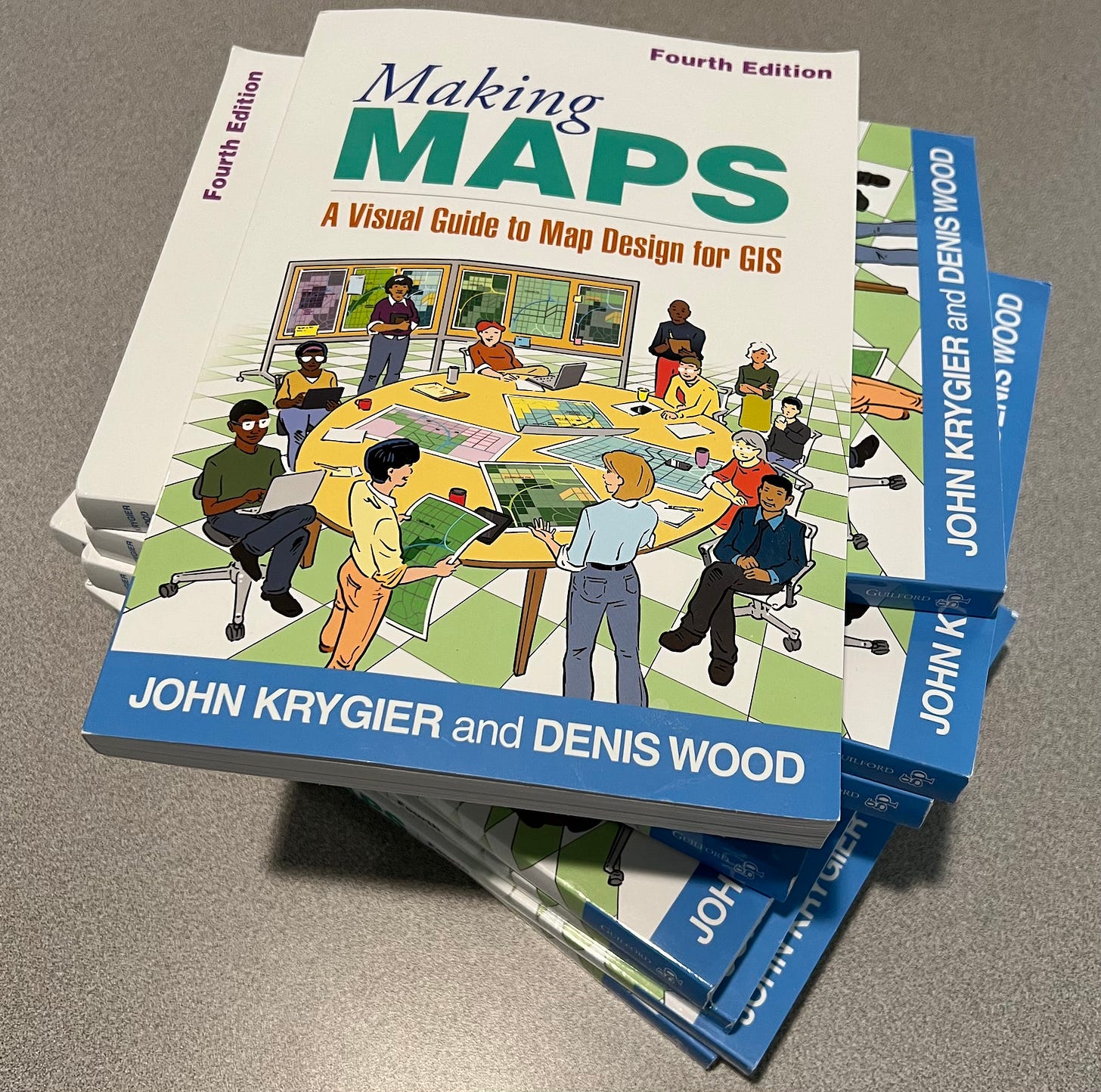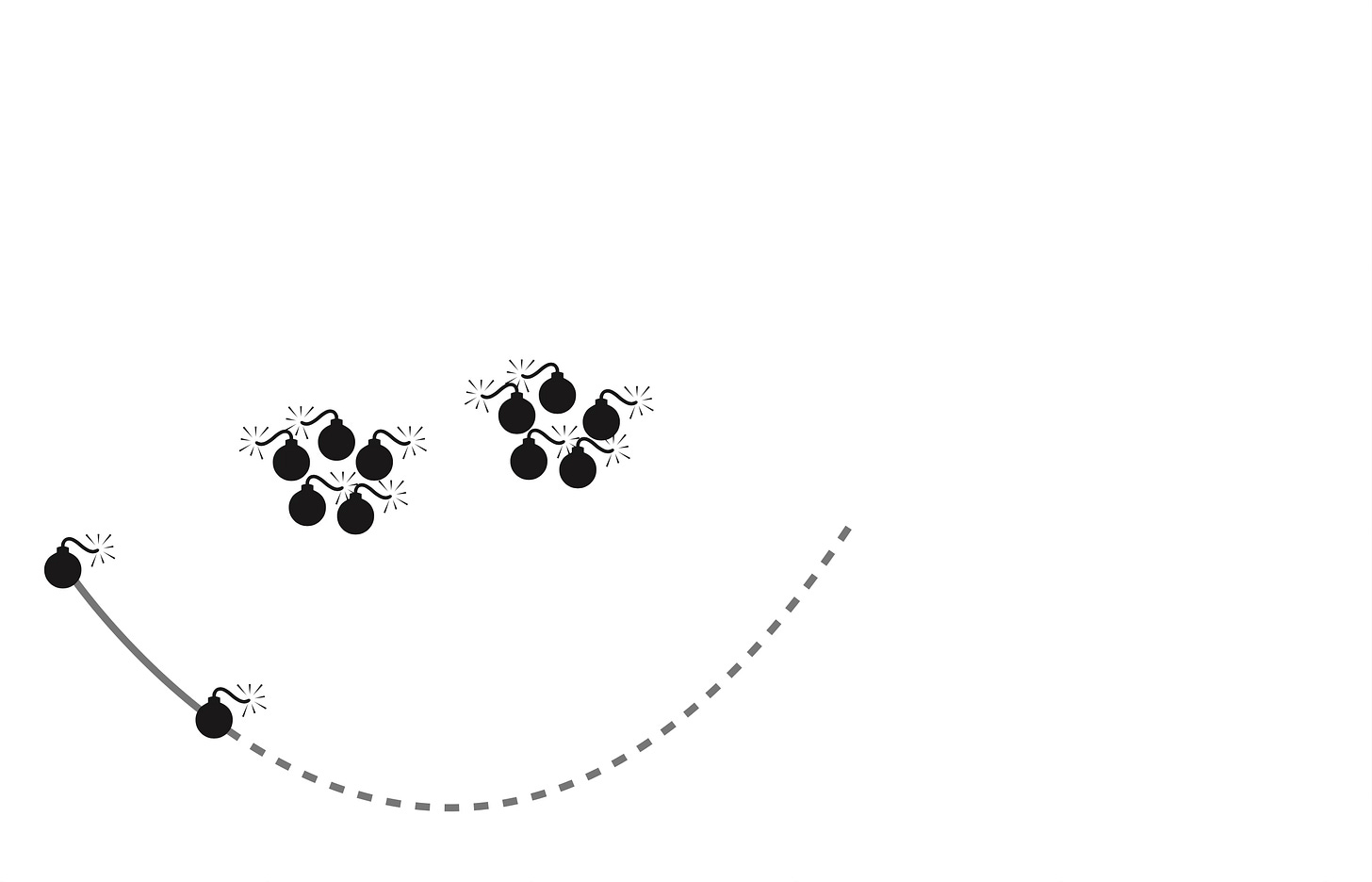Back in 2005, when the first edition of Making Maps came out, I was elated and ready to get going on the next edition. Many key ideas guiding the book over the years were there, but it looked wonky. I wanted a creative, visual book with lots of graphics and maps. In Freehand software (RIP), I patiently laid out the entire book in what I thought was a guide for my publisher’s graphic design team to refine. At some point, they broke the news to me: there was no graphic design team and no funds to design the entire book as I wanted. Could we use the Freehand files I created? And they did. Thus, the graphic weirdness, odd font (was it Georgia?), and unfortunate visual quality of that initial edition.
No worries, though. The ideas were there - from the process-based organization of the book, the numerous graphic examples, with interesting data (no corn and wheat maps), plenty of silences (jargon), and a subtle subversiveness reflecting the excitement of an era (late 90s to early 2000s) with ideas from Brian Harley, Denis Wood, Scientific Visualization, and Participatory Mapping (among others) all implicit in the book.
Twenty-four years later, the new fourth edition of Making Maps is more or less the book I envisioned in the early 2000s. The 2nd edition fixed the book design (a huge task I took on myself) and added the graphic novel (woven throughout the text). The 3rd edition reshuffled material to better organize a complex field into a coherent narrative. This new, 4th edition fixes some more organizational issues (like putting color earlier in the book), adds a bunch of new material, and weaves in several sets of interesting data that appear over and over until ending the book with a multivariate map drawing on earlier maps. I’ll highlight some of those changes and what drove them in future postings here.
The book is not a solo project. Denis got me unstuck (the original book proposal was accepted in 2001). Not only did my fist kid arrive around that time (he’s now in a PhD space engineering program), but I was having existential struggles with the material. This was a textbook, but I wanted it to be more than that (reflecting, again, the critical and emerging ideas of the time). Denis gave permission to discard and cut and dump lots of junk, the detritus of the field of cartography, in an attempt to create a fresh, engaged, active, affable and approachable introduction to maps and map design for a new generation. Sounds haughty, but there you have it.
Over the multiple editions reviewers had a really big impact on the book. Most of the updates to the new edition were inspired by real-world users of the book, faculty teaching map making and map design, who pointed out what was missing, what was not where it should be (in the process), and how to make the book better.
I’ve shifted from the Wordpress blog (makingmaps.net) to Substack. I’ll revisit some of the classic postings from that site here, in future postings, I’ve added some resources that can be used by instructors in the classroom, and will add more. And, as with the side site (Plethic) I’ll likely continue to explore ideas that in some way shape or manner might give us new or different ways to think about maps and mapping.
In the meantime, it’s a bit emotional to look at the 4th edition - a nearly 25 year effort. Two kids from mewling neonates to college students, an understanding spouse, a nearly uncountble number of pets (guinea pigs, hedgehots, rabbits, dogs, cats) come and gone. A cool job (at Ohio Wesleyan) that evolved and posed challenges (higher ed is a crazy place these days) and ended up a much better place than when I started. One constant has been the coffee shop, Cup ‘O Joe, down the street from my house in Clintonville (Columbus, OH), where I’ve probably done 70% of the work on Making Maps over the years. Always with some tunes in the background (Fennesz this morning). Always with a medium cup of light roast. Maybe a bagel.
You can buy a copy of the book via Guilford Press, where you can also request an examination copy if you are an instructor. It is a book designed to be a real book, rather than an ebook, so it works better in your hands. Order from your local bookstore if you can. I’m going to get a bunch of review copies and am happy to hear from you if you want a copy for a review - on your blog, or wherever. Feel free to contact me.







